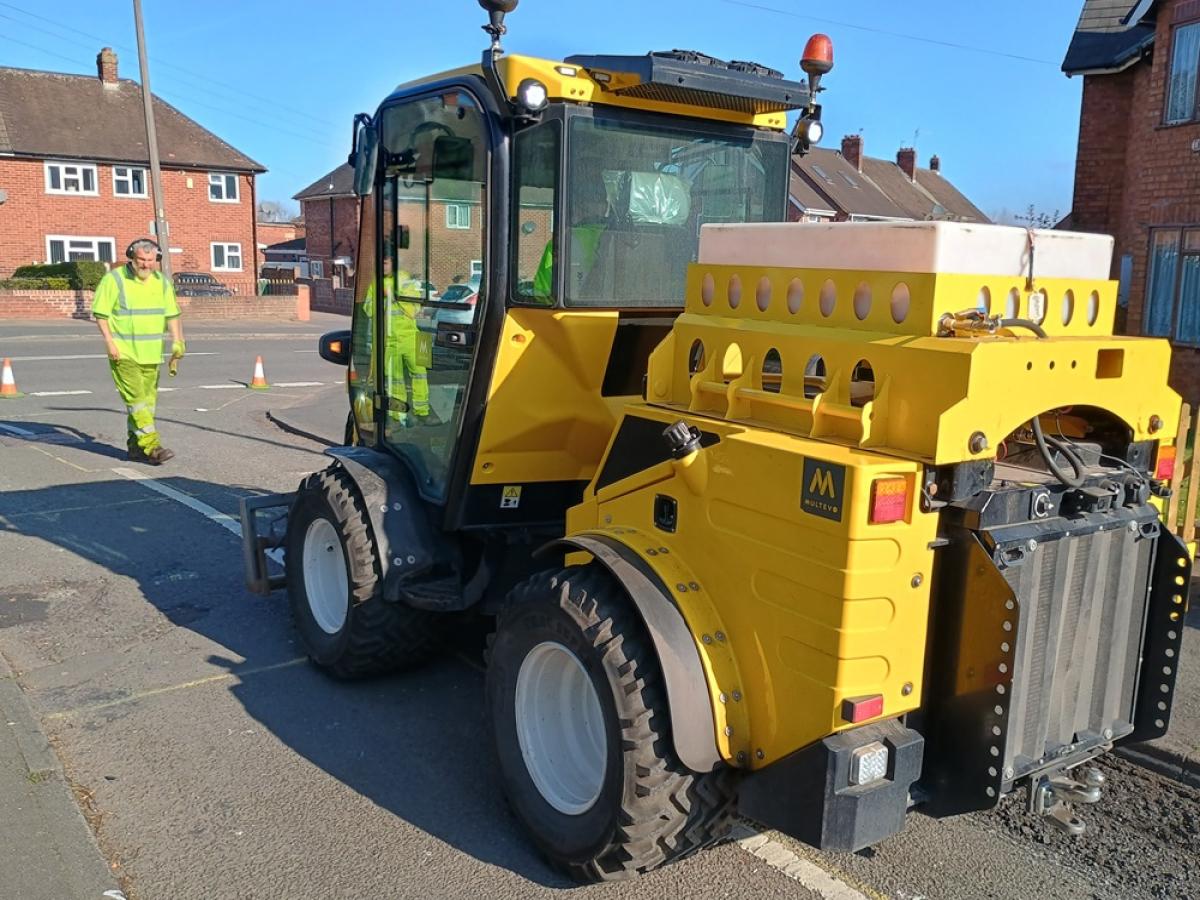
More investment is planned – more than £15million this financial year – to keep on top of these priority issues for residents and other road users.
The percentage of residents satisfied with road maintenance in Sandwell is more than double the local government benchmark, according to latest research.
And another recent survey put Sandwell in the top three local authorities nationally for the way it deals with potholes, and in the top 10 nationally for seven highway maintenance categories.
Sandwell Council considers prevention is better than cure and works hard to prevent potholes from forming in its road network.
Potholes typically form when water seeps through cracks in the road surface. When this water freezes, it expands and damages the road surface. This will eventually cause the road surface to break up and create potholes.
Sandwell’s highway maintenance programmes are targeted at preventing water penetrating the road surface, to help prevent potholes.
Sandwell uses best practice techniques to identify when to intervene to stop minor defects, such as surface cracks in the road from escalating into more significant ones such as potholes. This approach extends the life of roads, is less expensive in the long term, saving taxpayers’ money, and leads to less congestion and improved health benefits. Typically, 90% of highway maintenance spend in Sandwell goes on preventing defects becoming serious issues. This also ensures that, given the length of the road network in Sandwell, the council has to repair relatively few potholes.
The council has also invested in innovative machinery, such as the Multihog. This is an example of how Sandwell is looking to prepare the road surface for repairs much more quickly, reducing the need for temporary repairs to fix a pothole or road defect and ensuring more potholes are fixed ‘right first time’.
Councillor Keith Allcock, Sandwell Council’s Cabinet Member for Environment and Highways, said: “In Sandwell we’re determined to get things done on the issues that matter to our residents.
“That’s why we’re proud of our performance in maintaining our roads and preventing and repairing potholes, and we will continue to prioritise this work.
“We’re responsible for maintaining nearly 550 miles of carriageway across our six towns. So, while we can’t stop them all, we are winning the battle with potholes.
“In 2024 we filled 1,590 potholes, compared with 1,574 filled in 2023, which is a relatively small number, given the length of our road network.”
Councillor Allcock added: “We’re working hard to prevent potholes forming in the first place and filling them quickly when they do appear. We’ll continue to invest in our highways and machinery like the Multihog that saves time and money.
“Good, well-maintained roads and pavements are a priority for our residents. They are important for people’s safety, for their health by encouraging cycling and walking, and for connecting residents to jobs, education and local services.”
Sandwell Council is responsible for:
545 miles of carriageways
920 miles of footpaths and cycleways
30,850 streetlights, illuminated signs and traffic signals
172 bridges as well as many other structures
2,175 miles of drainage and culverts including nearly 42,000 gullies
Data sources:
A recent MEL Research survey showed that 61% of Sandwell residents were satisfied with road maintenance in 2024 compared to a local government benchmark of 27% (Local Government Association). 65% of Sandwell residents were satisfied with pavement maintenance compared to a local government benchmark of 41% (Local Government Association).
Sandwell Council participates in the National Highways and Transportation Survey each year. In 2024, Sandwell was ranked in the top three councils in the country for road condition, dealing with potholes and the speed of repair to damaged roads – and in the top ten nationally in seven categories relating to highway maintenance.
An updated Sandwell’s Highways Infrastructure Asset Management Plan was approved by the council’s Cabinet yesterday (Wednesday 25 June).
Sandwell has used data collected over many years to plan its preventative road maintenance programme, which for 2025/26 includes the following investment:
Roads: £8.3million
Footpaths: £3.3million
Bridges: £1.2million
Streetlights: £1.8million
Other assets: £1.1million+

